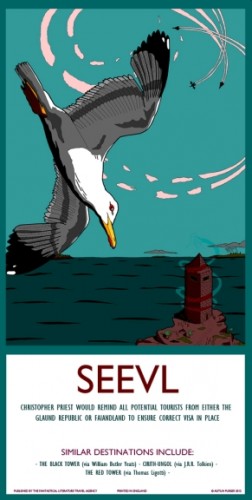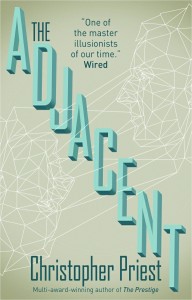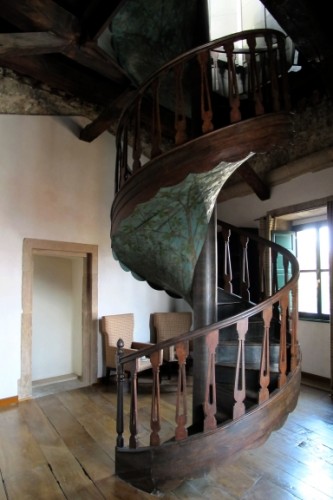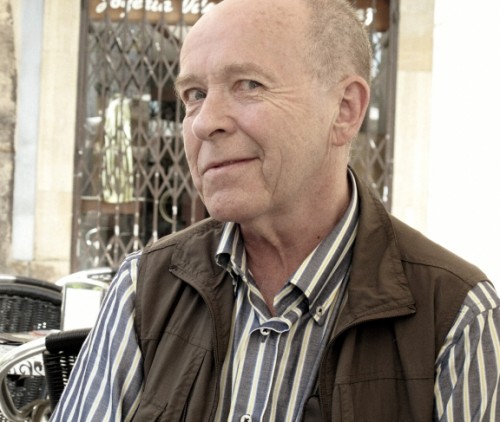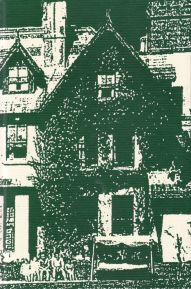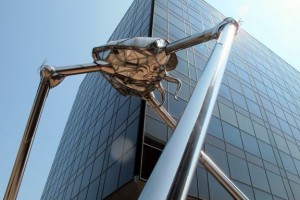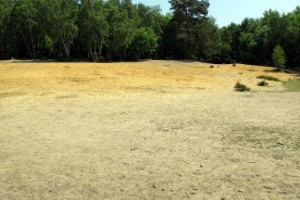Life After Life by Kate Atkinson – Doubleday, 2013, £18.99, 477pp, ISBN 978-0-385-61867-0
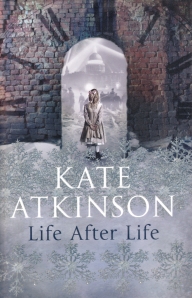 This is a beautifully written book, the language precise, evocative, sometimes lyrical, sometimes referential, often witty, sometimes even vernacular. You can open it at almost any page and you will find good English, plausible dialogue, well-balanced narrative, attractive passages of description. Kate Atkinson is an excellent stylist and this book is a pleasure to read.
This is a beautifully written book, the language precise, evocative, sometimes lyrical, sometimes referential, often witty, sometimes even vernacular. You can open it at almost any page and you will find good English, plausible dialogue, well-balanced narrative, attractive passages of description. Kate Atkinson is an excellent stylist and this book is a pleasure to read.
But the paradoxical question arises: does beautiful writing make a well-written novel?
While reading Life After Life, my thoughts often turned to the celebrated novel by Ian McEwan, Atonement (2001), with which it has several features in common. (A review I wrote of the McEwan novel is no longer part of this main website, but a copy of it can be read here.) There are similarities, and not only superficial ones.
Both the McEwan and the Atkinson are centred around fearful and traumatic events in the second world war – in Atonement it was the humiliating military evacuation from Dunkirk in 1940, and in Life After Life it is the Blitz on London during the winter of 1940-41. Both novels are notable for their fine prose. Both novels cover a sweep of years, although there are more years in Atkinson’s novel. Most interestingly, both books are experiments with the novel form: in Atonement McEwan toyed with metafiction (an unconvincing hidden narrator is wheeled out in a moment of last-minute authorial desperation), while Atkinson is experimenting with what might be called the unreliable event. I had not come across this before, and my interest was sparked.
The event in question is the death, in fact the multiple deaths, of the central character: Ursula Todd … the punning German meaning of the surname is probably significant. (Something is made of her given name – ‘little bear’, and so on – so this suspicion is not just fanciful.) Ursula dies repeatedly, or is killed, throughout the novel.
In the opening sequence she is depicted as a young political assassin, stalking Adolf Hitler in a Munich café in 1930 – she produces a gun, aims it at Hitler’s heart and pulls the trigger. Hitler’s henchmen instantly have their guns out and they fire back. ‘Darkness fell.’ These words, or variations of them, are used in the novel whenever Ursula dies. We might assume Hitler has been shot dead, but we are told only that she pulled the trigger of the gun, not that it went off.
She dies again two pages later: now it is twenty years earlier, February 1910, and she is being born. The house is isolated by snowdrifts, and the urgently expected doctor and midwife cannot get through. Ursula’s umbilical cord is wrapped around her neck and she is strangled. Darkness falls a second time. In the next chapter the doctor is miraculously present, he snips the cord with surgical scissors and little Ursula is safely born.
The pattern is set: throughout her life Ursula will face a series of crises and threats, yielding to most of them, but managing to reboot her life afterwards. She dies of Spanish flu at the end of the first world war, almost survives another bout but succumbs again. Later she marries an abusive man and ends up being murdered. In another strand she commits suicide. In yet another she is killed when a bombed house collapses on her during the Blitz. A second attempt on Hitler’s life is described, the henchmen getting her again, but again there is a question mark. We know only that Ursula pulls the trigger. Afterwards, the second world war breaks out and continues to 1945, so are we to presume that either the gun did not fire or that she missed?
Around her, other people are affected by her reboots. A beloved brother in the RAF is killed in a bombing raid over Berlin and the evidence of his death is unchallengeable – yet does a miracle later occur? In one of Ursula’s reincarnations he survives to marry his beloved young Nancy, herself murdered by a vagrant in an earlier Ursuline life-experience. In a weird variant alternate life, Ursula moves to Germany, befriends Eva Braun, marries a German officer and becomes part of Hitler’s inner circle in the Berghof.
All of these sequences are written convincingly. The author’s research material is impressively absorbed into the background and narrative so that it is not in any way obtrusive. The sheer boredom of life with the Führer in Berchtesgaden is brilliantly evoked. Atkinson’s long scenes in the London Blitz are particularly effective, with strong descriptive writing, several hair-raising scenes of attempted rescues from the rubble of bombed buildings and a genuine sense of the chaos created by the nightly bombing. Fairly deep research has gone on, because although such matters as Hitler’s mind-numbing table talk are documented they are not widely documented. There are many popular myths about life during the Blitz, misleading for writers who do not research too closely: the American writer Connie Willis is one recent example. Atkinson is made of sterner stuff and has done her work well.
Much of this would make Life After Life a well-written but conventional family saga, or a novel of the recent historical past. It is of course more than that: everything turns on the matter of Ursula’s repeated deaths.
It is absolutely unimportant that there is no attempt to explain how they happen: this is literature, not reality. The meaning is not rational – it is elsewhere, the result of a literary device.
Literary devices have a point. They promote fiction into metafiction, demanding the reader should examine the text as well as merely read it.
It is a long book: 477 pages. For most of those pages it is not at all clear what Kate Atkinson’s point is, and in fact it is delayed (by my reckoning) until about page 440, when the author’s intention slowly starts to become clear. Even then, it is merely hinted at, almost shyly, shrinking away from tackling the subject the reader has been wondering about for the previous 439 pages.
What are we to make of these repeated deaths? Dying is traumatic: how does apparent survival from it affect her psychology? Does the character learn from repeated deaths? Is the course of history changed by them? Is there a darker symbolism to it than a mere second chance, a rebirth? Is Ursula’s life noticeably changed by death? Yes, there are alternative paths taken, but are they in themselves fundamentally different from before?
The Hitler and Blitz passages aside, most of the first 400+ pages are concerned with what might broadly be called domestic matters. We read page after page of English middle-class family life in the first half of the twentieth century: an adored but distant father, a rambunctious older brother, a sweet-natured younger brother, a problematic cook, picnics, servants, birthdays, someone being trampled by a bull, a family dog or two, shopping expeditions, tennis, neighbours, lawn mowing, trips to London, walks in the park, weather, illnesses, infatuations, boyfriends, a semi-scandalous aunt who writes YA best-sellers.
The chronology of events is never clear: the novel darts to and fro in time, returning again and again, for instance, to the day of her birth. As the complexities of Ursula’s life-after-life mount, this miasma of mundane detail starts to rise around the reader’s perception of the book, clouding concentration.
One of the real problems is that Kate Atkinson’s writing of character is rather thin. To take an example, we know that the distant father is named Hugh, that everyone loves and respects him, but that’s about it. He pops up a few times, passes through with a mild manner, and leaves no apparent trace. The name ‘Hugh’ conveys vague and paternal niceness to the reader, but that’s all. The same lack of depth is true of almost all the other characters. Ursula’s mother is called Sylvie and she is in the book for most of the way, but she acts and talks very like Ursula, and several times I found myself briefly muddling them up. We also meet George, Pamela, Harold, Derek, Old Tom, Millie, Benjamin, Bridget, Teddy, Margaret, Ralph, Fred Smith, Mrs Appleyard, Jimmy, Crighton, amongst others … and a further medley of more or less interchangeable names during the Blitz sequence. (One good and memorable character emerges from the rubble: Miss Woolf, an ARP volunteer, plausibly intelligent and humane.)
Nothing is more important in fiction, or for that matter in metafiction, than good, deep characterization. We know, for example, who Derek Oliphant is and what he is like while we are reading about him – for several pages he is a significant character in Ursula’s life, or at least during one extreme passage of it. But she dies at the end of that passage and is re-born, and the name and the character of Derek fade as quickly from the mind of the reader as they do from Ursula’s life. This is because in spite of his behaviour we learn almost nothing about Derek beyond his actions. He is a function of plot, not of character.
But this is a book with a point, even if it takes about 440 pages to make it. Until then, the reader doesn’t have much to go on, once one’s appetite for middle-class English families is first satisfied, then exhausted.
Thirty pages from the end of the novel, and not a moment too soon, Ursula starts reacting to images from her past lives. She is taken to the family psychiatrist, complaining of persistent déjà vu. The reader, still alert for the true content of the novel, perks up. This is in one of the few chapters that does not carry a date, and there is no internal evidence to indicate how old she is – Sylvie, her mother, is there with her, so perhaps Ursula is still a child at this point. We are coming to the end of the book, but chronologically the scene appears to be close to the start of her life. While in the psychiatrist’s office she notices that a photograph of his dead son, formerly placed on a side table, has gone missing. She asks about it, but the psychiatrist draws a blank. He knows of no son. Alternative reality is nudging her.
From here, it is almost as if the first long part of the novel is recapitulated synoptically, this time lightly tuned by Ursula’s ghost memories. For instance, she happens to meet again the abuser, Derek Oliphant, but this time takes fear and runs away from him. To paraphrase a thought of Ursula’s: practice makes perfect. Things are coming right – even at the moment of Ursula’s birth Sylvie is ready with the surgical scissors. Does Ursula get it right, as seems to be implied, in her second attempt on Hitler’s life?
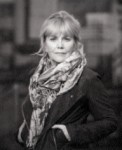 My main criticism of McEwan’s Atonement was that the only interesting feature of the novel was put in as an afterthought, a rather unconvincing way of trying to address the plot weaknesses exposed at the end. For all that novel’s success and apparent popularity, and its carefully wrought high literary style, I believe it is one of McEwan’s poorest novels. I do not feel as strongly about Life After Life, even though it shares something of the same failing in not coming to terms with its formal invention until far too late. I believe Kate Atkinson stumbled across the innovative technique, became enraptured of its narrative possibilities, but did not think through in literary terms what she was tackling. It is a brave book, but the conventional family goings-on immensely clog the bulk of the novel, and work depressingly against her. There is some terrific material in her book, and some lovely prose (she is a better, less adorned stylist than McEwan), but because the author did not take on the real challenge of her interesting idea it is not the novel it might have been.
My main criticism of McEwan’s Atonement was that the only interesting feature of the novel was put in as an afterthought, a rather unconvincing way of trying to address the plot weaknesses exposed at the end. For all that novel’s success and apparent popularity, and its carefully wrought high literary style, I believe it is one of McEwan’s poorest novels. I do not feel as strongly about Life After Life, even though it shares something of the same failing in not coming to terms with its formal invention until far too late. I believe Kate Atkinson stumbled across the innovative technique, became enraptured of its narrative possibilities, but did not think through in literary terms what she was tackling. It is a brave book, but the conventional family goings-on immensely clog the bulk of the novel, and work depressingly against her. There is some terrific material in her book, and some lovely prose (she is a better, less adorned stylist than McEwan), but because the author did not take on the real challenge of her interesting idea it is not the novel it might have been.
However, to conclude on a positive note – it seems likely to me that Life After Life will scoop many of the major literary awards this year. Good style counts for a lot with book-prize judges, and Kate Atkinson’s prose is almost faultless. The novel also contains its special extra, the rebirth of its protagonist, a formal surprise, another kind of literary catnip. It is not in fact an alienating surprise, but one that will seem rather more daring than it really is, a piquancy that can be argued sets it aside from, or ahead of, other novels in its year. I believe a sequel is planned.
John Clute wrote about Life After Life in his column in Strange Horizons.
Paul Kincaid reviewed it on his blog, Through the Dark Labyrinth.
Kate Atkinson writes about the background to her novel, and provides a list of her sources.

